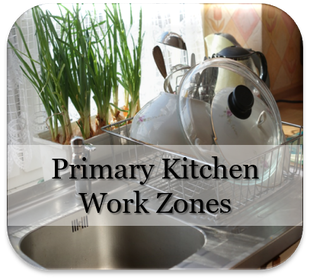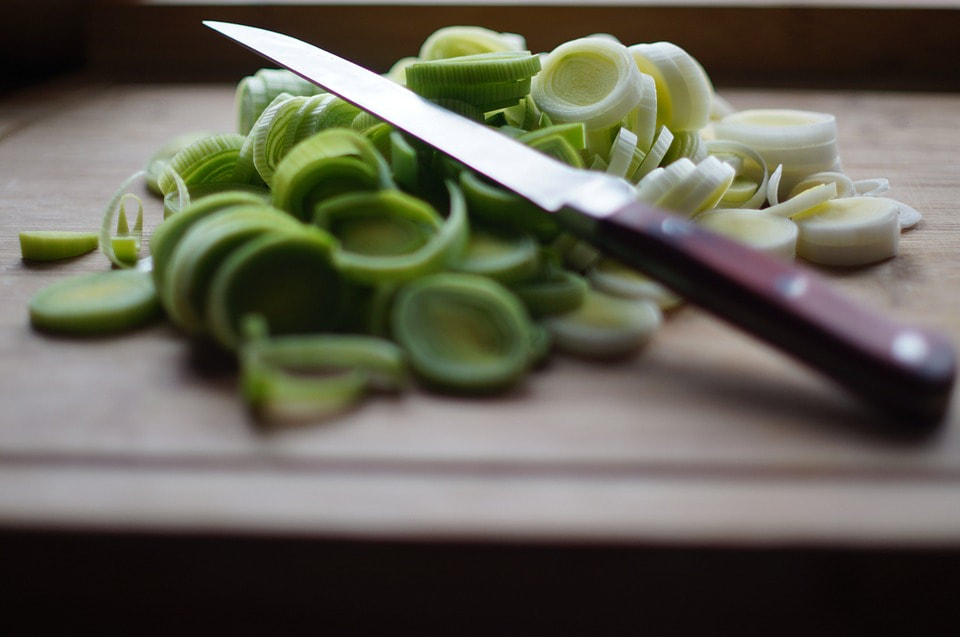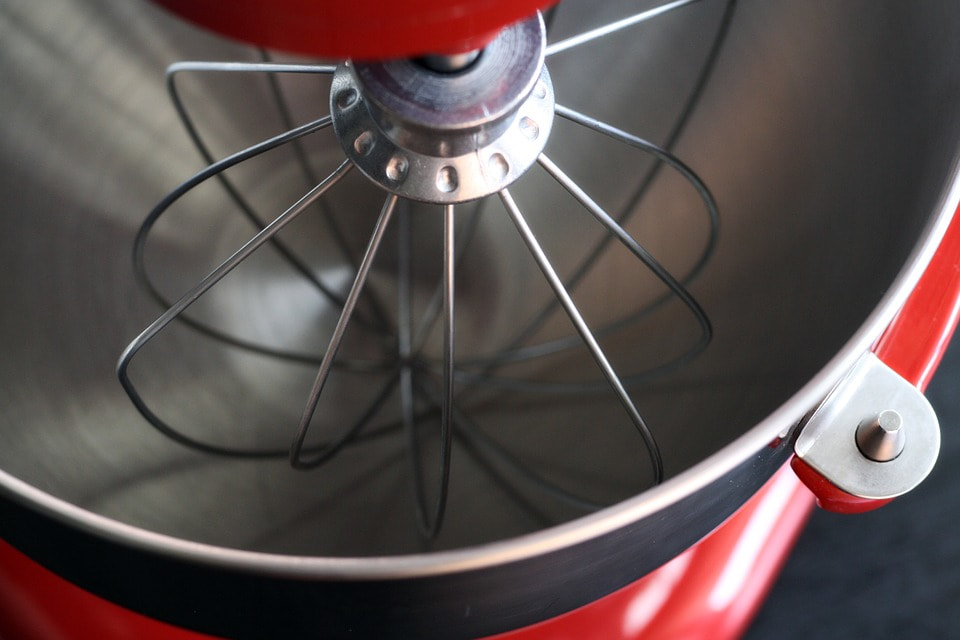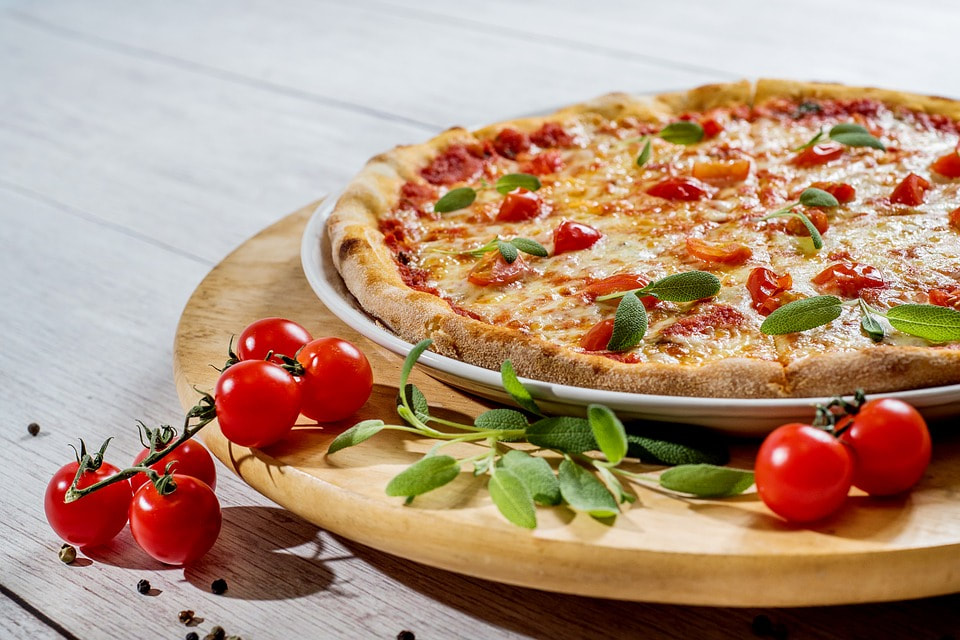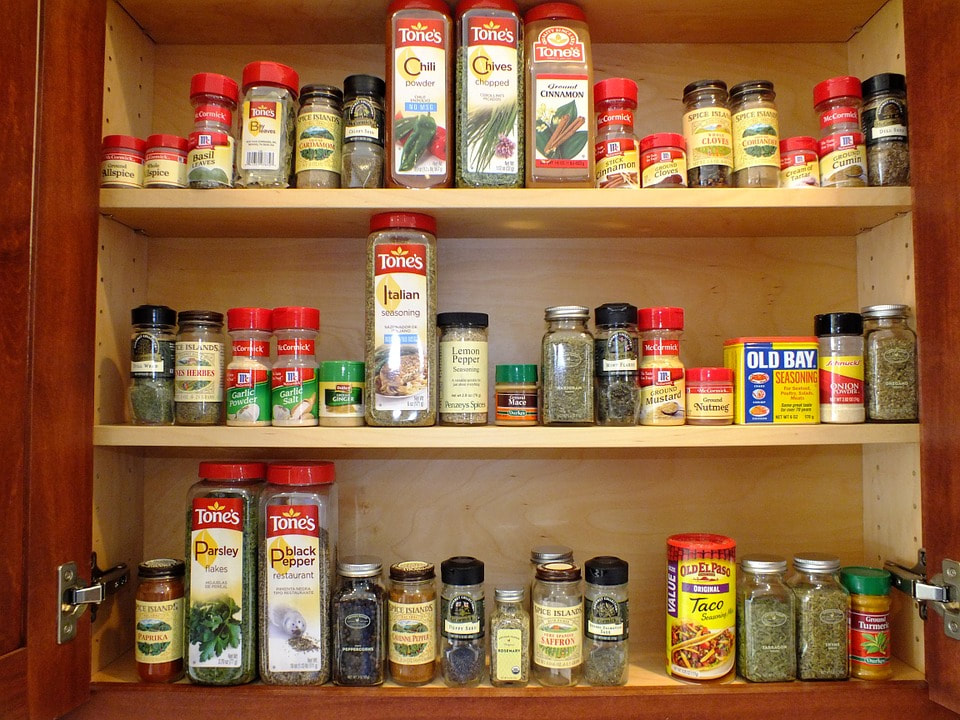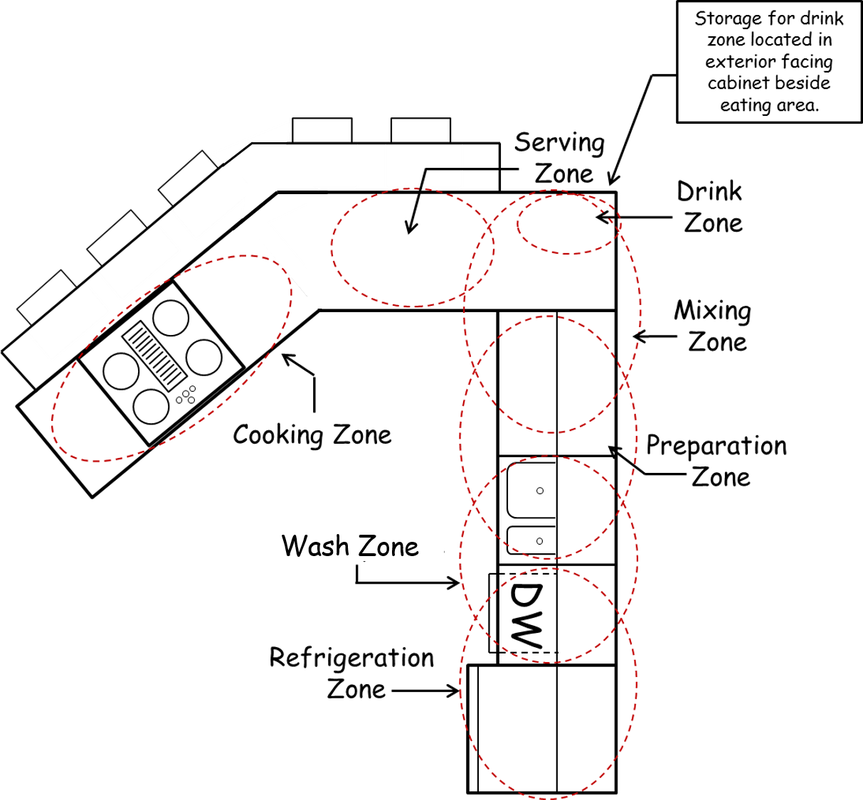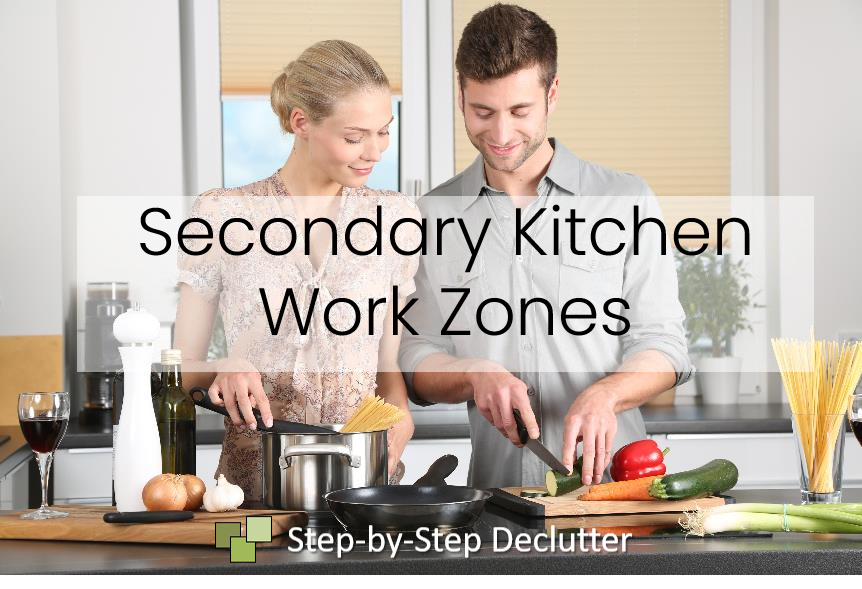|
|
Secondary Kitchen Work Zones |
|
|
Kitchen work zones are specialized areas within a kitchen where all the necessary tools and equipment for accomplishing a specific type of task are stored for easy access. The three primary kitchen work zones are the refrigeration zone (or the area around the refrigerator), the wash zone (or the area around the kitchen sink), and the cooking zone (or the area around the cooktop and oven). In addition to these main functional areas, it is useful to establish a variety of secondary kitchen work zones to accommodate the many supporting tasks that take place in the kitchen.
Following are several examples. |
Preparation Zone
|
|
This secondary kitchen work zone is for cutting, slicing, peeling, and assembling everything from salads to casseroles.
What to store in this zone:
Where to locate this zone:
The preparation area should be adjacent to the wash zone where you will have easy access to water for washing and mixing as needed. Depending on the configuration of your kitchen, it can be helpful to have this zone situated between the wash zone and the cooking zone.
What to store in this zone:
- Utensils for preparing food such as knives, graters, peelers, mixing spoons, spatulas, whisks, garlic press, can opener, etc.
- Cutting boards
- Mixing bowls
- Small kitchen appliances used for preparing food (mixer, food processor, blender)
- Canned & dry goods
Where to locate this zone:
The preparation area should be adjacent to the wash zone where you will have easy access to water for washing and mixing as needed. Depending on the configuration of your kitchen, it can be helpful to have this zone situated between the wash zone and the cooking zone.
Mixing Zone
|
|
The mixing zone is closely related to, and most likely overlaps with, the preparation zone. It's primary purpose is...mixing (as I'm sure you guessed). It may seem redundant to establish this as a separate kitchen work zone, but doing so allows more than one cook to work simultaneously without getting in one another’s way (too much). For instance, one person can be mixing cornbread while another is chopping vegetables for a salad.
These two secondary kitchen work zones may be side by side and some of the tools may be shared, but thinking of them in terms of separate spaces and planning accordingly can create a more functional kitchen as activities flow from one work area to the next.
What to store in this zone:
Where to locate this zone:
As mentioned, the mixing area should be next to or overlapping with the preparation zone.
These two secondary kitchen work zones may be side by side and some of the tools may be shared, but thinking of them in terms of separate spaces and planning accordingly can create a more functional kitchen as activities flow from one work area to the next.
What to store in this zone:
- Mixing bowls
- Mixing spoons
- Spatulas
- Measuring tools (spoons, cups, etc.)
- Electric mixer
- Baking pans
Where to locate this zone:
As mentioned, the mixing area should be next to or overlapping with the preparation zone.
Serving Zone
|
|
More often than not we eat buffet style at our house. If that’s true for your family as well, you may find that it’s nice to have a section of counter space designated for serving prepared food. This would be your 'serving zone'. It will most likely double as something else as well unless you are one of the unfortunate few who has an overabundance of counter space.
What to store in this zone:
Where to locate this zone:
The serving zone should be near the cooking zone or directly across from it so that prepared food can go straight from the stove top or oven to the serving location with as few steps as possible.
What to store in this zone:
- Plates and bowls
- Flatware
- Serving utensils
- Toaster
- Breads
- Cold cereals
- Snacks
Where to locate this zone:
The serving zone should be near the cooking zone or directly across from it so that prepared food can go straight from the stove top or oven to the serving location with as few steps as possible.
Storage Zone
|
|
While you may not do much actual work in this particular secondary kitchen work zone, its value can’t be underestimated as a centralized location for storing food and supplies. If you are fortunate enough to have an established pantry, then you’ve already got a ready-made storage zone. If you don’t have a built-in pantry in your kitchen, you may be able to create your own from a free-standing armoire, pie safe, or other versatile piece of furniture. Most of us, however, are forced to use a portion of our kitchen cabinets for storing food and supplies.
What to store in this zone:
Where to locate this zone:
Some pantries are built into the kitchen; some are separate but adjacent to it. Then there are those of us who are forced to be creative, sometimes storing extra food and supplies in the basement, in a hall closet, under beds, or behind the sofa. Ideally a food storage zone should be located within or adjacent to the kitchen, and preferably near the preparation zone. Sometimes, though, you have to make the most of what you've got. This is where adding a free-standing cabinet of some sort can really do wonders, if you've got the space.
What to store in this zone:
- Dry goods (pasta, cereal, crackers, snacks, baking supplies)
- Canned goods
- Bottled goods (juices, extra condiments, etc.)
- Some produce such as potatoes or onions
- Disposable plates, cups, and flatware
- Less-frequently used small kitchen appliances
Where to locate this zone:
Some pantries are built into the kitchen; some are separate but adjacent to it. Then there are those of us who are forced to be creative, sometimes storing extra food and supplies in the basement, in a hall closet, under beds, or behind the sofa. Ideally a food storage zone should be located within or adjacent to the kitchen, and preferably near the preparation zone. Sometimes, though, you have to make the most of what you've got. This is where adding a free-standing cabinet of some sort can really do wonders, if you've got the space.
Quick Cooking Zone
|
|
If your idea of cooking is heating frozen food in the microwave, it may be useful to establish a secondary kitchen work zone around that appliance.
What to store in this zone:
Where to locate this zone:
A quick cooking zone should be located near the microwave.
- Microwave
- Microwave safe dishes and plates
- Flatware
- Serving utensils
- Scissors for opening food packages
- Access to trash disposal
Where to locate this zone:
A quick cooking zone should be located near the microwave.
Drink Zone
|
|
A drink zone can be a great way to reduce congestion in the kitchen.
What to store in this zone:
Where to locate this zone:
A drink station should be located on the outskirts of the kitchen away from the main activity area. This way guests or non-cooks can help themselves whenever they like without getting in the cook’s way.
What to store in this zone:
- Coffee maker or Keurig
- Coffee filters
- Ground coffee
- Tea bags, hot cocoa packets, other drink mixes (whatever you like to drink)
- Creamer
- Sugar or sugar substitute
- Spoons for stirring
- Mugs
- Small trash can
- Nearby access to water (preferable)
Where to locate this zone:
A drink station should be located on the outskirts of the kitchen away from the main activity area. This way guests or non-cooks can help themselves whenever they like without getting in the cook’s way.
Piecing it all Together
|
|
At this point you may be wondering where you’re supposed to fit all these zones. Remember that kitchen work zones typically overlap. In some cases, they may share certain tools or supplies making it practical to locate them adjacent to one another. The idea is to create the most functional space possible. To achieve this, it is useful to designate certain areas of the kitchen for certain activities.
The image below shows a sample kitchen with various zones identified. Notice that almost all of them overlap
The image below shows a sample kitchen with various zones identified. Notice that almost all of them overlap
Below is an elevation view of a portion of the same kitchen with the general contents of each cabinet and drawer identified.
Key to Kitchen Work Zone Elevation:
A – Infrequently used serving dishes (cold foods)
B – Drinking glasses, pitchers
C – Bottle opener, ice cream scoop, serving/salad utensils, freezer bags
D – Food storage containers, colanders & strainers
E - Baskets to hold dish cloths & dish towels, additional serving dishes
F – Dish washing supplies, scrubbers, dish drainer (when not in use)
G – Blender, food processor, electric mixer
H – Knives, peelers, graters, spatulas, mixing spoons, misc. food prep utensils, measuring tools
I – Mixing bowls & baking pans/sheets
J - Coffee filters, coffee grounds, tea bags & drink mix packets, creamer, sweetener, spoons, mugs
A – Infrequently used serving dishes (cold foods)
B – Drinking glasses, pitchers
C – Bottle opener, ice cream scoop, serving/salad utensils, freezer bags
D – Food storage containers, colanders & strainers
E - Baskets to hold dish cloths & dish towels, additional serving dishes
F – Dish washing supplies, scrubbers, dish drainer (when not in use)
G – Blender, food processor, electric mixer
H – Knives, peelers, graters, spatulas, mixing spoons, misc. food prep utensils, measuring tools
I – Mixing bowls & baking pans/sheets
J - Coffee filters, coffee grounds, tea bags & drink mix packets, creamer, sweetener, spoons, mugs
Not every kitchen will have every kind of work zone presented here. Pick and choose those that make the most sense for you based on your needs and available space. I think you will find that rethinking the organization of your space with primary and secondary kitchen work zones in mind will greatly enhance the functionality of this vital room of the home.
Proudly powered by Weebly
